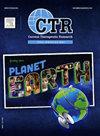Comparison of Bioavailability of Nitrates and Nitrites in 3 Species of Amaranthus: A Randomized, Double-Blind, Placebo-Controlled, 4-Way Crossover Study in Healthy Subjects Under Fasting Conditions
IF 1.5
Q3 MEDICINE, RESEARCH & EXPERIMENTAL
Current Therapeutic Research-clinical and Experimental
Pub Date : 2025-01-01
DOI:10.1016/j.curtheres.2025.100789
引用次数: 0
Abstract
Background
Amaranthus is a significant source of dietary nitrates, which have been known to improve aerobic capacity and exercise performance in physically active individuals. There is a significant data gap on nonpartitive pharmacokinetics and bioequivalence studies of nitrate and nitrite from 3 species of Amaranth (A. hybridus, A. hypochondriacus, and A. tricolor).
Objective
This study aimed to assess the bioavailability of nitrates and nitrites from 3 Amaranthus species in a randomized, placebo-controlled design, thereby filling this gap.
Methods
A double-blinded, 4-way crossover study was conducted in 16 healthy participants. Each participant enrolled in the study received a single dose of 2000 mg of Amaranthus extract or a placebo. The plasma and saliva samples were collected at specific intervals over 24 hours. Nitrate and nitrite concentrations were analyzed using a validated LCMS/MS method.
Results
After the administration of amaranth extracts, both plasma and saliva samples were observed significantly higher levels of nitrate and nitrite compared with the placebo group. Pharmacokinetic variables (Cmax, AUC0-t24, and AUC0-∞) found a similar pattern for nitrite and nitrate in the 3 amaranth products but were significantly different from placebo (P < 0.05), in both plasma and saliva samples. Bioequivalence analysis confirmed significant bioequivalence among the 3 amaranth extracts for nitrite and nitrate.
Conclusions
This study concludes that the 3 species of Amaranthus—A. hybridus, A. hypochondriacus, and A. tricolor are bioequivalent in terms of plasma and saliva nitrate and nitrite levels from a single dose of 2000 mg amaranth extract and have higher bioavailability than placebo. These findings report that Amaranthus extracts could potentially act as a daily diet supplement for improving the cardiovascular and neurogenerative health of the body, particularly aging people.
3种苋属植物中硝酸盐和亚硝酸盐的生物利用度比较:一项随机、双盲、安慰剂对照、空腹条件下健康受试者的4向交叉研究
马兰花是膳食硝酸盐的重要来源,已知硝酸盐可以改善身体活跃个体的有氧能力和运动表现。3种苋菜(a . hybridus、a . hypochondriacus和a . tricolor)中硝酸盐和亚硝酸盐的非参与药代动力学和生物等效性研究存在明显的数据缺口。目的采用随机、安慰剂对照设计,对3种苋属植物中硝酸盐和亚硝酸盐的生物利用度进行评价,以填补这一空白。方法对16例健康受试者进行双盲、四向交叉研究。参加研究的每个参与者都接受了单剂量的2000毫克苋菜提取物或安慰剂。血浆和唾液样本在24小时内每隔一段时间采集一次。采用经验证的LCMS/MS法分析硝酸盐和亚硝酸盐浓度。结果服用苋菜提取物后,血浆和唾液样本的硝酸盐和亚硝酸盐水平均明显高于安慰剂组。药代动力学变量(Cmax, AUC0-t24和AUC0-∞)发现3种苋菜产品中亚硝酸盐和硝酸盐的模式相似,但与安慰剂显著不同(P <;0.05),在血浆和唾液样本中。生物等效性分析证实3种苋菜提取物对亚硝酸盐和硝酸盐具有显著的生物等效性。结论苋菜属的3种植物属属植物具有较强的多样性。单剂量2000 mg苋菜提取物对马齿苋、苋籽苋和三色苋的血浆和唾液硝酸盐和亚硝酸盐水平具有生物等效性,并且具有比安慰剂更高的生物利用度。这些研究结果表明,苋菜提取物可以作为日常饮食补充剂,改善身体的心血管和神经系统健康,尤其是老年人。
本文章由计算机程序翻译,如有差异,请以英文原文为准。
求助全文
约1分钟内获得全文
求助全文
来源期刊
CiteScore
3.50
自引率
0.00%
发文量
31
审稿时长
3 months
期刊介绍:
We also encourage the submission of manuscripts presenting preclinical and very preliminary research that may stimulate further investigation of potentially relevant findings, as well as in-depth review articles on specific therapies or disease states, and applied health delivery or pharmacoeconomics.
CTR encourages and supports the submission of manuscripts describing:
• Interventions designed to understand or improve human health, disease treatment or disease prevention;
• Studies that focus on problems that are uncommon in resource-rich countries;
• Research that is "under-published" because of limited access to monetary resources such as English language support and Open Access fees (CTR offers deeply discounted English language editing);
• Republication of articles previously published in non-English journals (eg, evidence-based guidelines) which could be useful if translated into English;
• Preclinical and clinical product development studies that are not pursued for further investigation based upon early phase results.

 求助内容:
求助内容: 应助结果提醒方式:
应助结果提醒方式:


